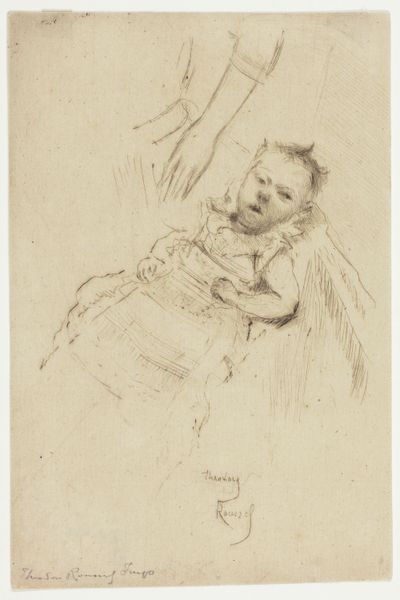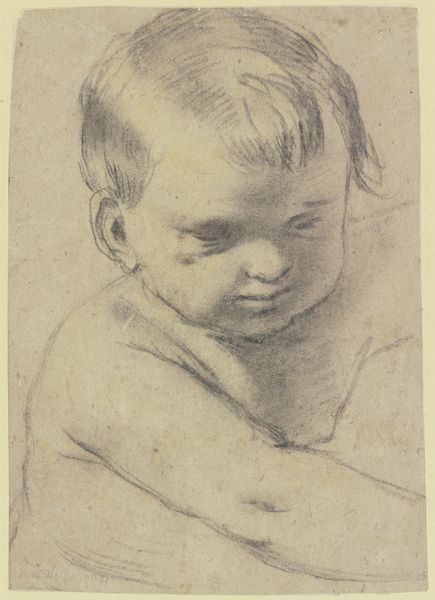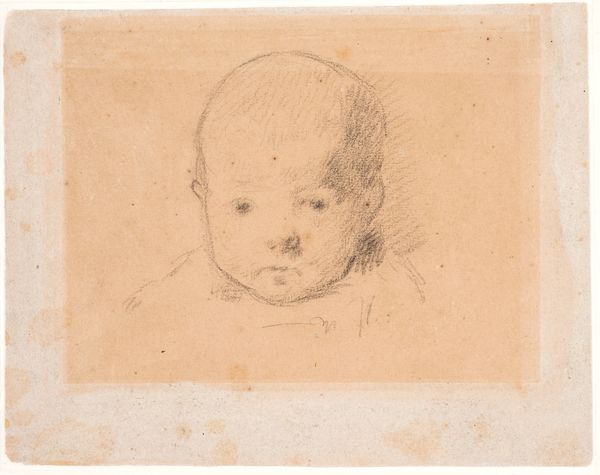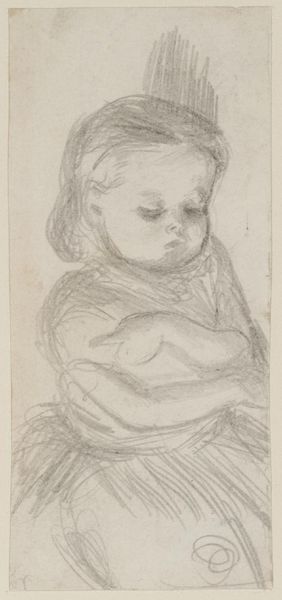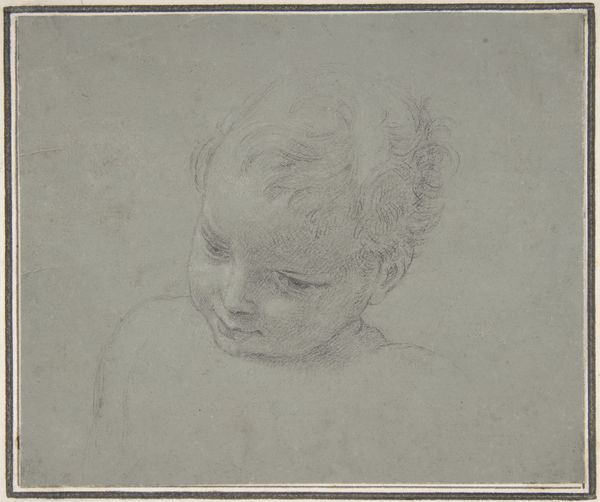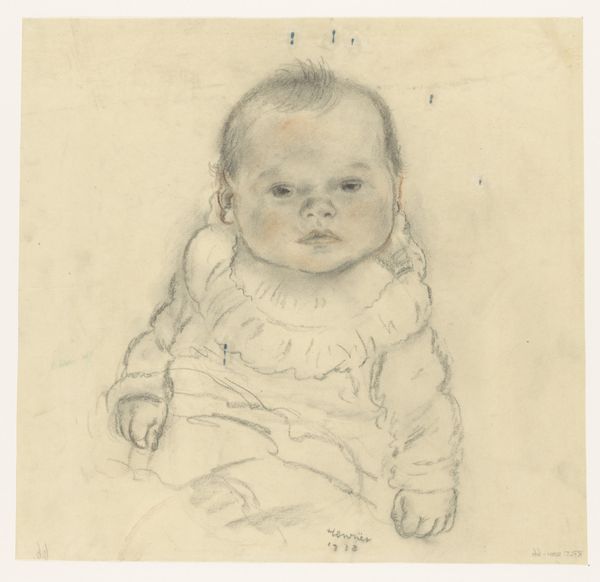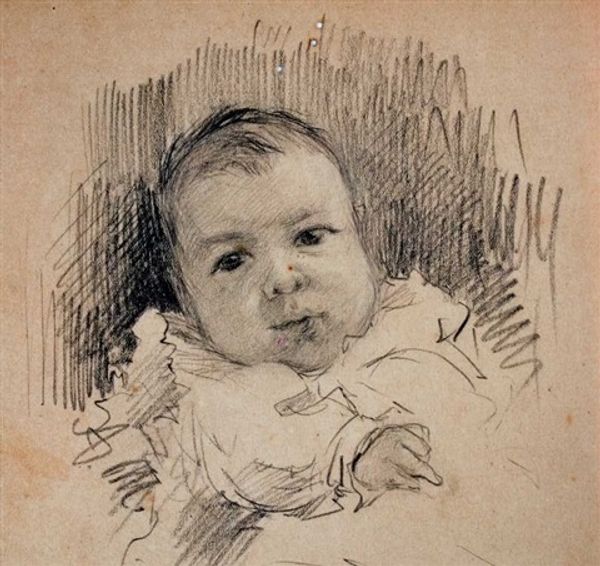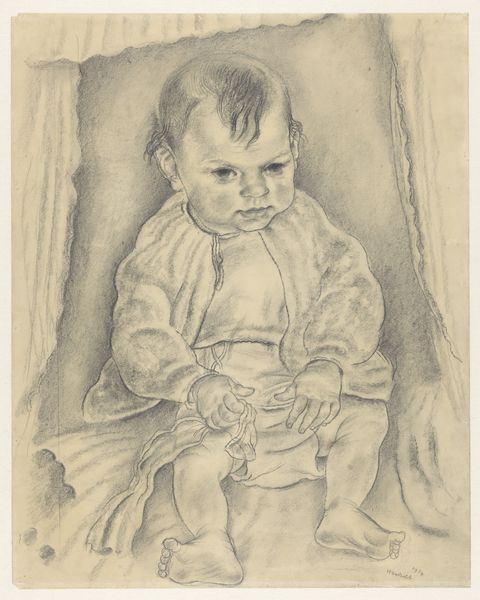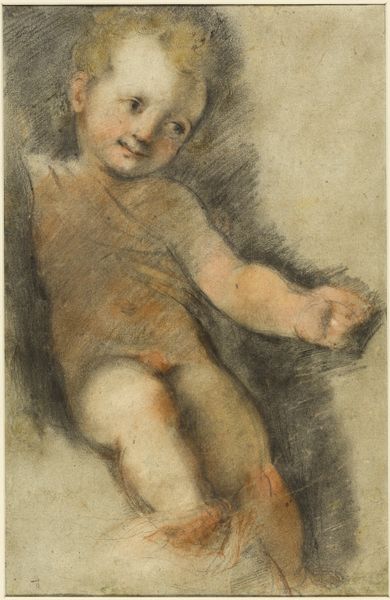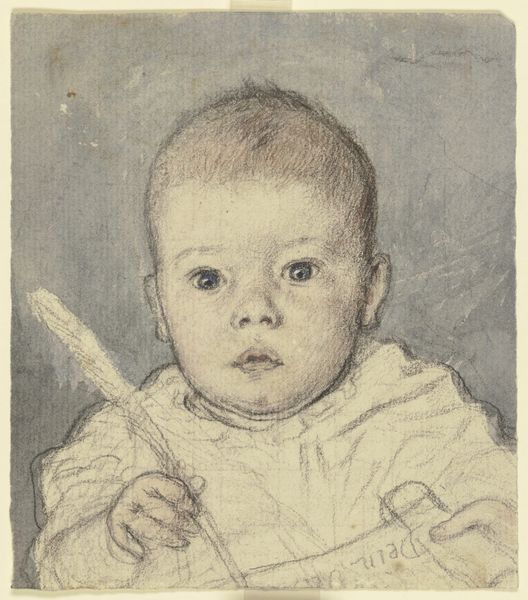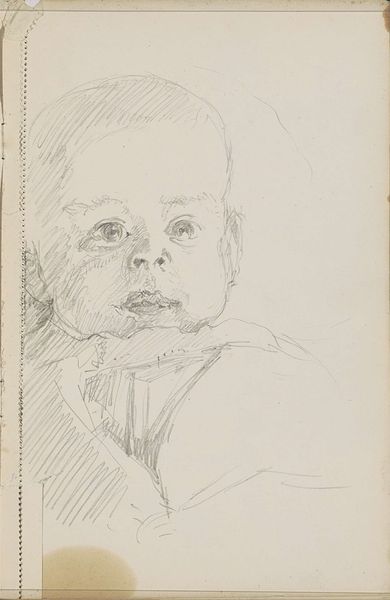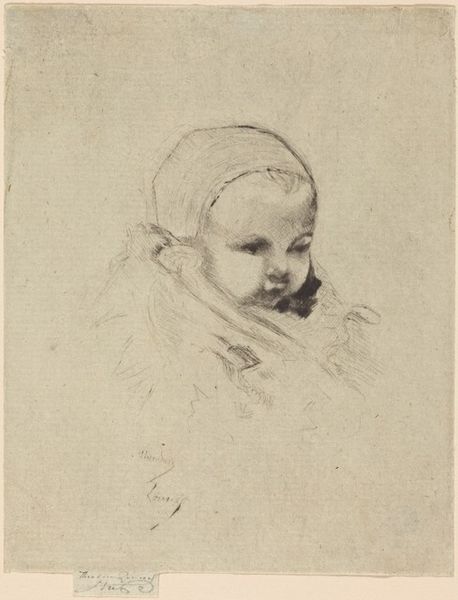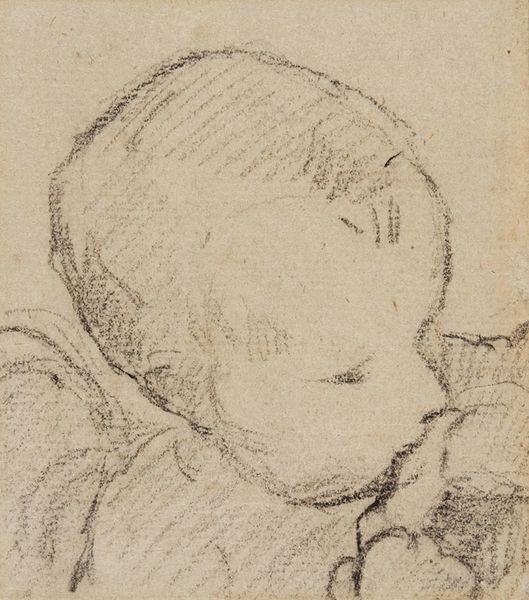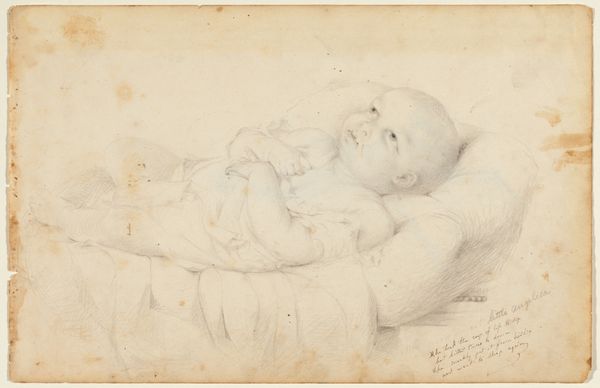
drawing, paper, pencil, chalk
#
portrait
#
drawing
#
16_19th-century
#
impressionism
#
paper
#
pencil drawing
#
pencil
#
chalk
Copyright: Public Domain
Curator: This sketch is entitled "Bildnis des Victor Scholderer als Kleinkind," a portrait of Victor Scholderer as a baby by his father, Otto Scholderer. It resides here in the Städel Museum and it’s rendered in pencil and chalk on paper. Editor: My initial impression is tenderness. It's soft, almost hesitant in its lines, which gives it this incredible vulnerability. Curator: Yes, the sketch highlights Otto Scholderer’s intimate relationship to the sitter, particularly as we can examine the artist's relationship with the institution of fatherhood, a social construction heavily dependent on late 19th-century bourgeois notions of raising male children in Europe. Editor: Absolutely. The choice of materials adds to this. Pencil and chalk— they're so immediate, so tactile. You can imagine the artist quickly capturing these fleeting moments of the child’s infancy, studying the kid's face like he's memorizing what it’s made up of: baby fat and tiny little eyebrows. It speaks volumes about labor and the creation of art within the domestic sphere. The work provides valuable information regarding gender roles in art. Curator: Exactly. We often frame such portraits in terms of pure representation, but a more incisive reading, especially of domestic images, asks who has the agency to create, who is being created, and the complex socio-economic conditions under which each party performs. The Impressionist brushstrokes have a flattening effect as they become about light and shapes but at the core we must examine the circumstances under which even informal work comes to be. Editor: Well, this perspective completely shifts the artwork. It really helps me to understand how this one artwork stands in stark contrast to some of Scholderer's later work of wealthy dinner parties. We've progressed here to seeing not simply a sweet drawing, but an image fraught with issues surrounding labor, social hierarchy and gender, the drawing becomes about something bigger. Curator: I am so glad to hear it! This perspective acknowledges that aesthetic experience is intertwined with power and knowledge and it underscores the importance of analyzing an artwork through interdisciplinary lenses. Editor: Thinking of artistic labor here has led me down a path to new interpretations about social class during the time. Thank you!
Comments
No comments
Be the first to comment and join the conversation on the ultimate creative platform.
